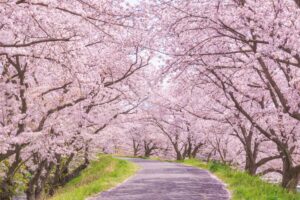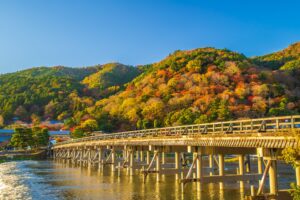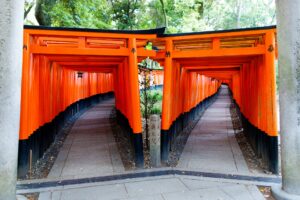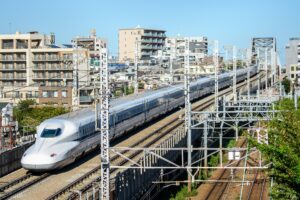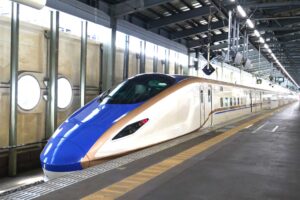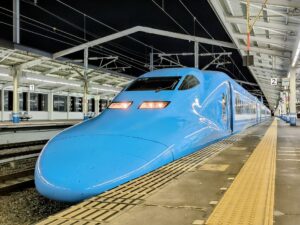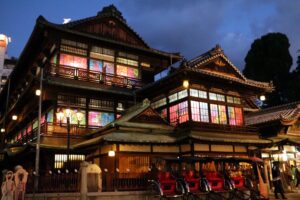Sensoji Temple, located in the heart of Asakusa, Tokyo, is one of Japan’s most iconic and historically significant Buddhist temples. Dating back to 628 AD, this temple holds great religious importance in Japanese Buddhism and attracts millions of visitors annually. In this guide, you’ll learn everything you need to know about visiting Sensoji Temple, from its fascinating history to the top attractions, festivals, and practical travel tips.
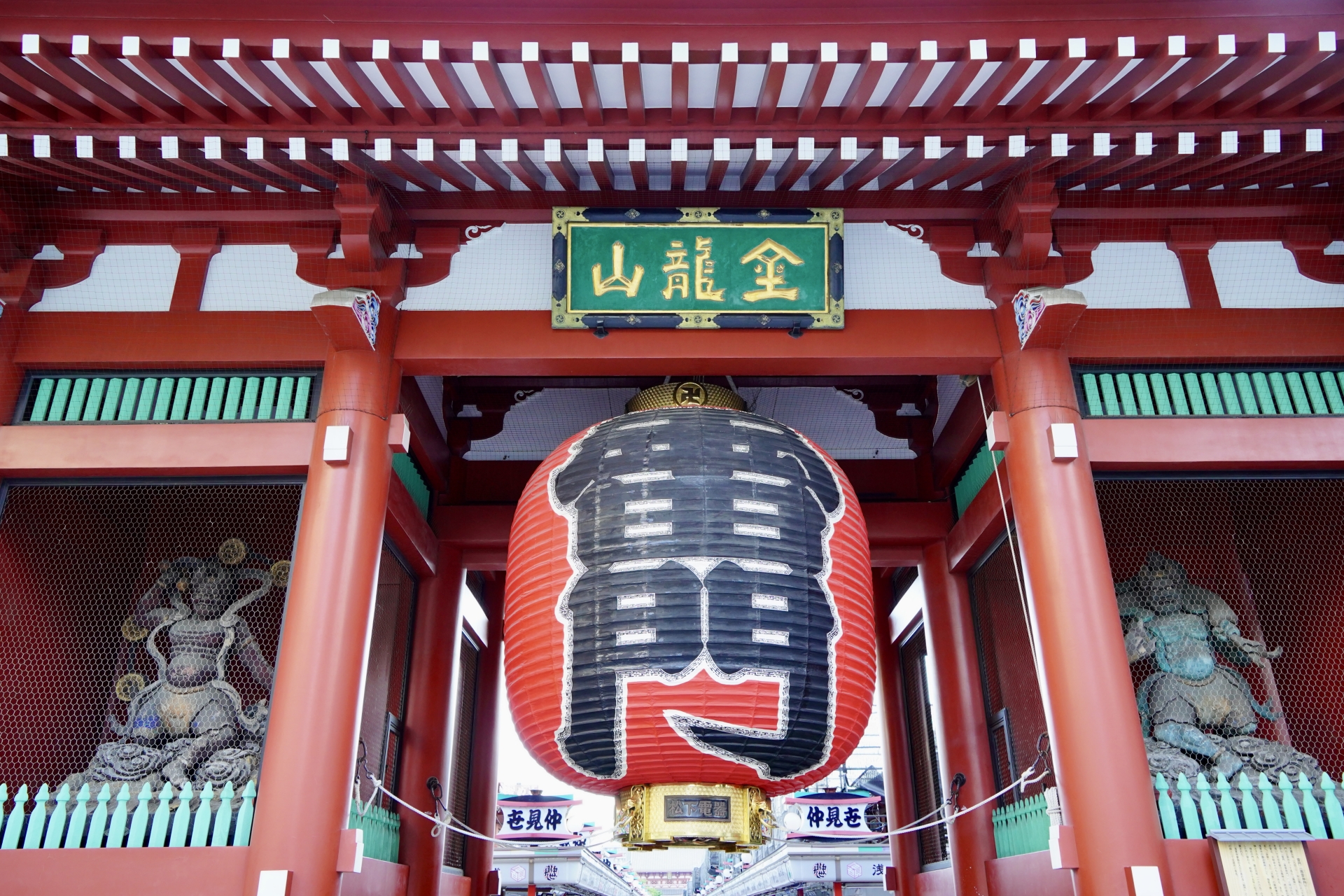
The Rich History of Sensoji Temple
Founded in 628 AD, Sensoji Temple is the oldest temple in Tokyo, making it a major cultural landmark. According to legend, two fishermen brothers discovered a statue of the Buddhist Bodhisattva Kannon in the Sumida River, and despite returning it to the water, it kept coming back to them. The temple was built to honor this miraculous event. Over centuries, it has been a place of devotion and a symbol of Japan’s deep spiritual connection to Buddhism. Sensoji has also witnessed several reconstructions, including after World War II when much of it was damaged by bombings.
Religious Significance of Sensoji Temple
Sensoji Temple is dedicated to Kannon, the Goddess of Mercy, and is a key pilgrimage site for Buddhists. Every year, it hosts the famous Sanja Matsuri, a major festival celebrating the temple’s history and the three men who founded it. The temple grounds also feature a five-story pagoda, which symbolizes the teachings of Buddhism. As you walk through the gates of Sensoji, you’ll be entering a sacred place deeply connected to Japan’s religious heritage.
Top Things to See at Sensoji Temple

When you visit Sensoji Temple, be prepared to immerse yourself in a visual and spiritual experience. Some of the main attractions include:
- Kaminarimon (Thunder Gate): This massive red gate is the temple’s most iconic entrance, featuring a large lantern and statues of protective gods.
- Nakamise Shopping Street: A lively market that stretches from Kaminarimon to the temple, offering traditional snacks, souvenirs, and crafts.
- Hondo (Main Hall): The temple’s main prayer hall, where visitors can make offerings and prayers.
- Five-Story Pagoda: Located within the temple complex, this pagoda is a striking symbol of Buddhist architecture and philosophy.
Exploring Nakamise Street
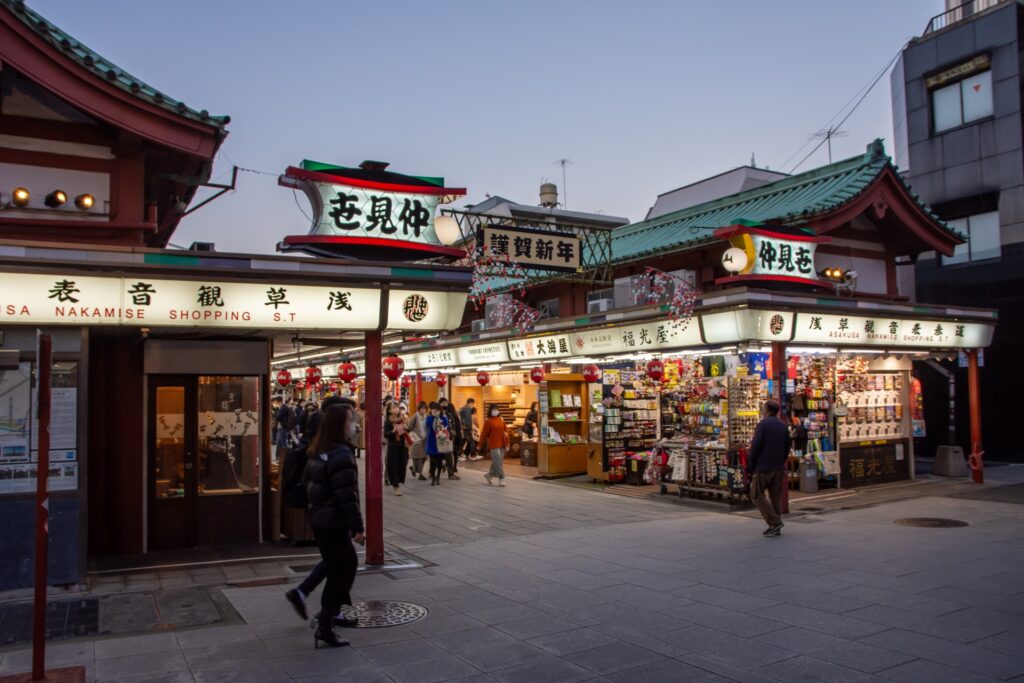
Nakamise Street is a bustling shopping area that leads up to the temple’s main hall. Here, you can indulge in traditional Japanese snacks like senbei (rice crackers) and taiyaki (fish-shaped cakes), or buy handmade souvenirs such as fans, kimonos, and traditional toys. This vibrant street offers a glimpse into Japan’s cultural heritage, making it a must-visit for tourists.
When is the Best Time to Visit Sensoji Temple?
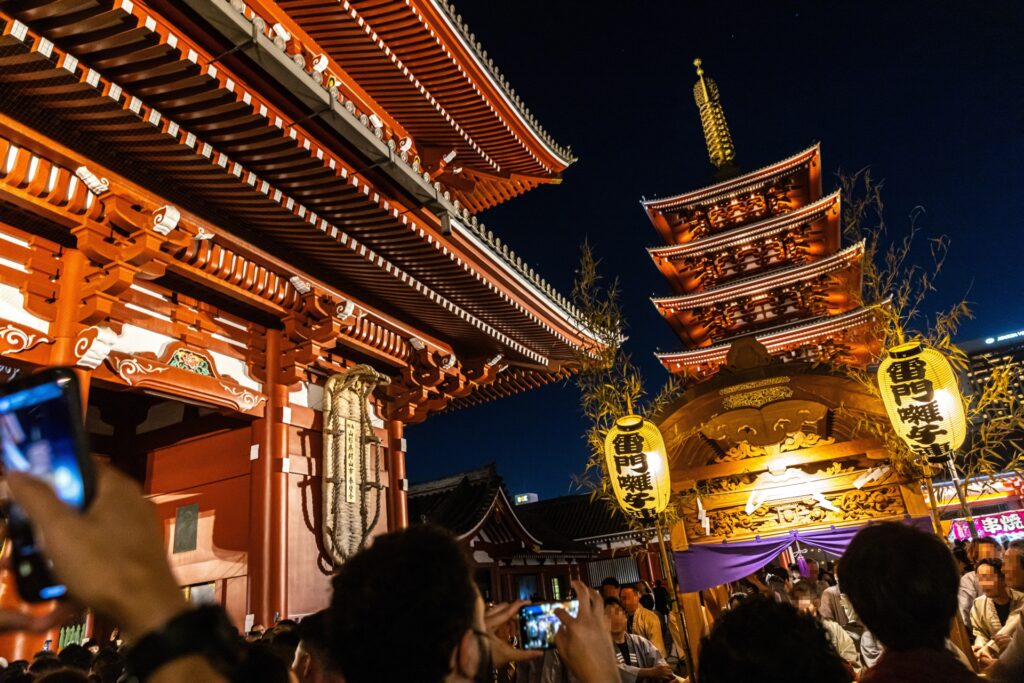
Sensoji Temple is open year-round, but certain times offer a more vibrant experience. If you want to avoid crowds, visit early in the morning or late in the evening. The Sanja Matsuri, held in May, is the temple’s most famous festival, drawing huge crowds for its vibrant parades and traditional performances. Cherry blossom season in late March and early April is also a magical time to visit, as the temple is surrounded by blooming sakura trees.
Practical Travel Tips for Visitors
Whether you’re a first-time visitor or returning to Sensoji Temple, these tips will help make your trip smooth and enjoyable:
- Opening Hours: The temple grounds are open 24 hours, while the main hall is open from 6:00 AM to 5:00 PM (6:30 AM from October to March).
- Admission: Free entry to the temple grounds and main hall.
- Dress Code: As a religious site, it’s recommended to dress modestly.
- Photography: Photos are allowed, but be respectful, especially inside prayer areas.
Sensoji Temple Accessibility and Directions
Sensoji Temple is easily accessible from various parts of Tokyo:
- From Tokyo Station: Take the Ginza Line to Asakusa Station. The temple is a short 5-minute walk from Exit 1.
- From Shinjuku: Take the Asakusa Line directly to Asakusa Station.
- From Narita Airport: Use the Keisei Skyliner to Ueno, then transfer to the Ginza Line to Asakusa.
The temple area is generally wheelchair accessible, with ramps and wide pathways. Visitors with mobility challenges will find the layout convenient for exploration.
Conclusion
Sensoji Temple offers a perfect blend of history, religion, and cultural experiences for anyone visiting Tokyo. Whether you’re drawn by its ancient legends, vibrant festivals, or the peaceful aura of its temple grounds, Sensoji is a must-visit destination. Plan your trip to Sensoji Temple today to experience the heart of Tokyo’s spiritual and cultural heritage!




